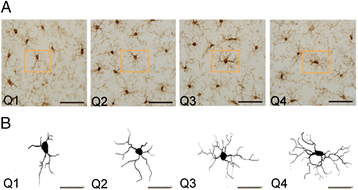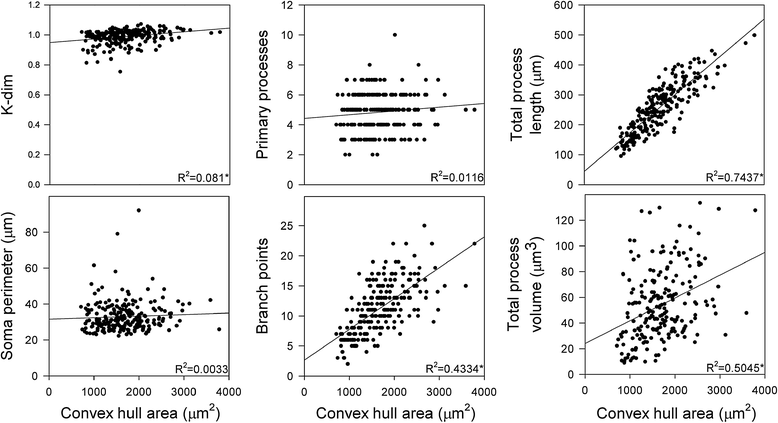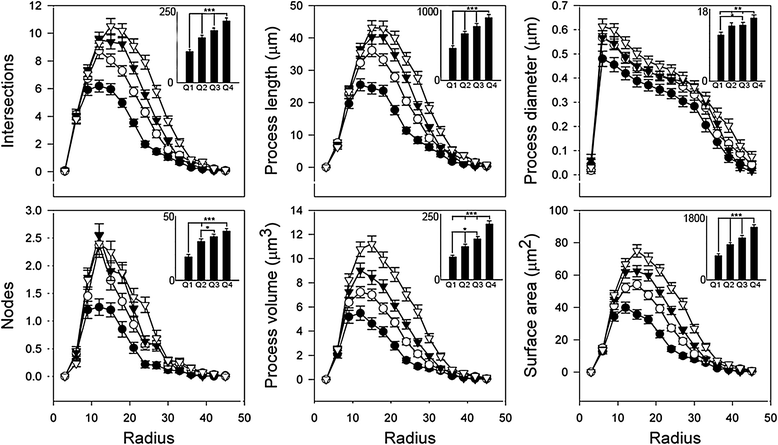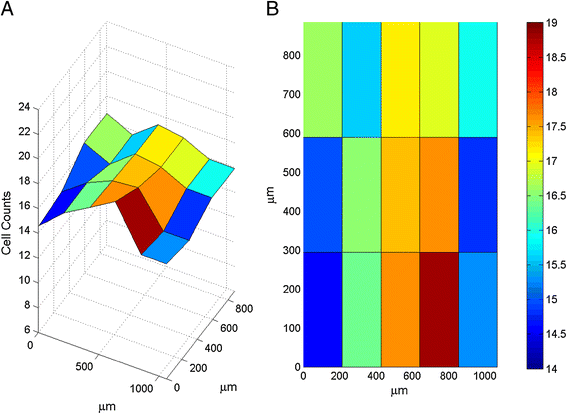Quantitative assessment of microglial morphology and density reveals remarkable consistency in the distribution and morphology of cells within the healthy prefrontal cortex of the rat
- PMID: 25343964
- PMCID: PMC4213482
- DOI: 10.1186/s12974-014-0182-7
Quantitative assessment of microglial morphology and density reveals remarkable consistency in the distribution and morphology of cells within the healthy prefrontal cortex of the rat
Abstract
Background: Microglial morphology within the healthy brain has been the subject of a number of observational studies. These have suggested that microglia may consist of separate classes, which possess substantially different morphological features. Critically, there have been no systematic quantitative studies of microglial morphology within the healthy brain.
Methods: We examined microglial cells within the adult rat prefrontal cortex. At high magnification, digital reconstructions of cells labelled with the microglial-specific marker ionized calcium-binding adapter molecule-1 (Iba-1) were made in each of the cortical layers. These reconstructions were subsequently analyzed to determine the convex hull area of the cells, their somal perimeter, the length of processes, the number of processes, the extent of process branching and the volume of processes. We additionally examined whether cells' morphological features were associated with cell size or numerical density.
Results: Our analysis indicated that while there was substantial variability in the size of cells within the prefrontal cortex, cellular morphology was extremely consistent within each of the cortical layers.
Conclusions: Our results provide quantitative confirmation that microglia are largely homogenous in the uninjured rodent prefrontal cortex.
Figures






References
MeSH terms
LinkOut - more resources
Full Text Sources
Other Literature Sources

